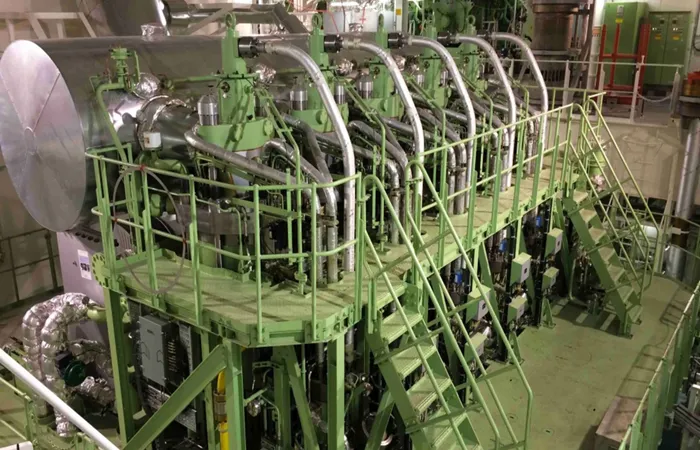Marine diesel engines have evolved significantly since their creation by Frédéric Dyckhoff and Adrien Bochet in 1903. Notable innovations include turbocharging in 1925 and fuel-injection pumps in 1927.
Today, growing concerns over the environmental and health effects of diesel fuel emissions are driving innovation. There is a push to incorporate cleaner-burning fuels into standard diesel engines to reduce greenhouse gas emissions. These efforts are paving the way for dual-fueled workboats both in the U.S. and internationally.
The latest advancement comes from Caterpillar, which has introduced the dual-fueled CAT 3500E engine, using methanol as the second fuel. The new engine will be available in 12-cylinder (up to 2,550 hp) and 16-cylinder (up to 3,386 hp) configurations, offering the same power output as existing CAT 3500 diesel engines used in tugboats, inland towboats, and offshore support vessels. Caterpillar is the first company in the U.S. to combine methanol and diesel in a combustion engine.
Caterpillar’s Will Watson, marine product director, explained that methanol was chosen because it closely matches diesel in terms of power density. This similarity means that fuel tank sizes and fuel requirements for methanol are almost the same as for diesel. However, Watson emphasized that the real environmental benefits come from using “green methanol,” which is produced from renewable sources or carbon capture and has a lower carbon footprint than conventional methanol derived from fossil fuels.
Watson also highlighted that adopting methanol as a second fuel doesn’t require a significant learning curve for boat operators. The dual-fuel CAT 3500E still operates as an internal combustion engine, making the transition easier for vessel owners, operators, and mechanics.
While Europe and parts of Asia are ahead of the U.S. in developing the infrastructure for green methanol, Watson stressed that more active infrastructure is needed globally. “The key thing is to be ready for it,” he said, noting that the industry is working on ensuring readiness for the fuel as it becomes more widely available.
Currently, no engine in the U.S. is certified for dual-fuel use, but Caterpillar’s 3500E has received DNV certification for methanol readiness. Watson confirmed that production is in progress, with full certification expected in the near future.
The first dual-fuel CAT 3500E engine will likely be installed in a tugboat, as the engine is optimized for high methanol substitution rates even at low load ranges, which are common for tugboats. The tugboat will be built at a Damen shipyard in Europe and is expected to be operational within the next 18 months.
As Watson noted, the focus is currently on the tugboat sector, but Caterpillar plans to expand to other platforms once the dual-fuel engine is proven. “Once we get this done, we’ll go onto other platforms,” he added.
Related Topics:

